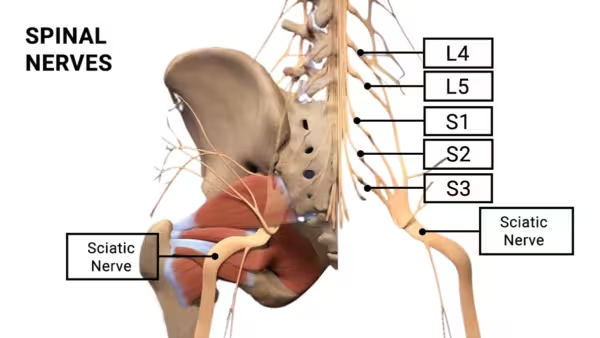What is Pain?
What is pain? This is a question we don’t tend to think about that much. All we know is that something hurts and we don’t want it to. But what is it and why does it happen?
Drugs companies invest huge sums of money in finding new ways of alleviating pain and they’re getting better and better at it. But this relationship has developed in such a way that we forget how important pain it is. Pain is necessary, it’s essential information that requires a reaction.
- Pain in the low back, buttock, back of the leg and foot.
- Numbness, pins and needles, or weakness in the low back, buttock, leg or feet.

Our body communicates with itself through the nervous system, which is essentially a complex network of wires carrying information between our brain, and the various tissues of our body. We can experience many different sensations. Everyone is familiar with the main five senses; touch, smell, sight, sound and taste, but we have a lot more than that. Every sensory nerve has a special type of nerve ending which picks up different information. These sensations travel along the nerve into the spinal cord and brain, where we experience them.
Pain is what we experience when nerves detect damage or injury. There are two basic types of nerves that carry the sensation of pain to the brain and spinal cord (although these have lots more sub-types). There is a fast one used for instant, simple awareness of pain, and a slower one with more detailed information. This first one carries the information so fast that often we’ve reacted to the pain before we’ve felt it. Ever leant on something hot or trodden on something sharp? You probably found that you’d pulled away from it before realising that it hurt. This is an important reflex to prevent further damage. The slower nerve brings with it more detail about the pain. If it hasn’t gone away with the initial reflex then we need more information to protect ourselves and resolve the problem. This is the type of pain we experience over a longer period of time.

One of the interesting things about pain are the little nervous system hacks that most animals, including us, have developed to ease it off. “Rub it better”. Were you ever told this as a child? If you hurt yourself then rub it better. This has lots of benefits including stimulating blood supply and waste drainage over an injured area, but it also has a pain killing effect. The sensation of touch travels along a faster nerve than the slower-longer pain. Because of this the brain pays more attention to the rubbing sensation than the pain sensation and you get some relief. This is also why rubs such as deep heat/biofreeze/tiger balm etc work, the tingling sensation we feel on the skin can over-ride the painful one.
Another thing we often do when we hurt ourselves is swear. Stub your toe and the air turns blue. Awful as this can be when you realise the kids are listening and they’ve now got a new vocabulary to share with everyone at school, it actually helps the pain. This effect has been replicated in many controlled tests. It is believed that it occurs because of the way swearing/shouting stimulates our fight/flight response which produces adrenaline in our body. Adrenaline is a natural pain killer.

Pain can be complicated. Long-term chronic pain can do some recalibrating of our pain perception and dramatically change the way we experience it. It can mean that we are hypersensitive to other sensations in the same area, it can increase or decrease our pain thresholds and it can become so habitual in the brain that we can continue to experience pain even when the injury is healed. Our psychology is also hugely linked to recovery, with people in more optimistic emotional states getting out of discomfort more quickly than those in more pessimistic states.
Movement and exercise are very beneficial to healing. This can be very tricky to manage as to much too soon can prolong an injury, as can too little too late. It is always best to take advice from a professional to find the right balance.
In summary, pain is a normal and essential part of life. If you are experiencing ongoing pain, you should listen to your body and think about what you’ve been doing. Most of the time you’ll recognise what the pain is for and be able to solve the problem yourself. However, if you experience severe pain, particularly if there are any other unusual symptoms with it, seek advice immediately. If a musculoskeletal pain (ie: back, neck, shoulder, joint/muscle etc) is getting worse or persisting over a long period of time without improving it’s probably wise to give us a call and see how we can help.
To hear a bit more about pain, pain killers and anti-inflammatory medication click on the link below.


